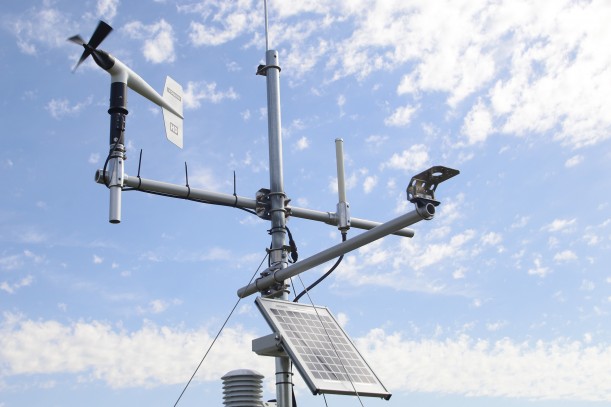UNL Climate Center Develops Tool for New Climate Normals

The Custom Climatology Tool developed at the High Plains Regional Climate Center allows users to examine average monthly and annual temperature measurements over customizable periods of time. The data is collected from thousands of U.S. weather stations. (Nebraska State Climate Office via UNL)
When a meteorologist says that a chilly day in May was 12 degrees lower than normal, the normal being referenced is typically from the official 30-year U.S. Climate Normals. Updated every decade, the Normals are based on 30-year averages of climate observations recorded at thousands of weather stations across the country.
The National Oceanic and Atmospheric Administration’s National Centers for Environmental Information released new 1991-2020 U.S. Climate Normals on May 4. In conjunction, the University of Nebraska–Lincoln’s High Plains Regional Climate Center published a new tool that allows users to examine what normal looks like relative to longer or shorter timeframes than the most recent 30 years.
Rezaul Mahmood, director of the climate center based in the university’s School of Natural Resources, said the NCEI asked the climate center to develop the Custom Climatology Tool, which now allows users to examine average monthly and annual temperature measurements over customizable periods of time.
For anyone who works with climate data, the release of the new U.S. Climate Normals is a major event, Mahmood said. It tells the story of a changing climate. “Normal” 30-year temperature cycles have grown warmer over time. “Normal” annual precipitation has increased, too. A NOAA news release about the U.S. Climate Normals states that global warming is affecting the upward trajectory of the new normals. The Custom Climatology Tool allows people to look at what normal used to be with available weather station data from as far back as 1961.
“We always get curious about the weather,” Mahmood said. “‘OK, today is hot, but how hot is it? I’m thinking it is very hot, but maybe it’s not very hot.’ It’s linked to our life.”
The Custom Climatology Tool, which was developed in collaboration with NCEI staff, is available on the High Plains Regional Climate Center website at hprcc.unl.edu/ncei-cct.
The University of Nebraska—Lincoln produced this report.
User login
Omaha Daily Record
The Daily Record
222 South 72nd Street, Suite 302
Omaha, Nebraska
68114
United States
Tele (402) 345-1303
Fax (402) 345-2351




